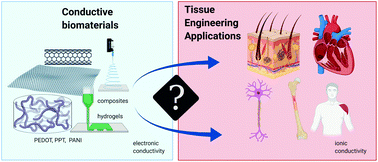Electroconductive scaffolds for tissue engineering applications
Abstract
Many material systems that can conduct electronic current have been in recent years studied in the context of tissue engineering. It is suggested that materials that can carry electronic current are necessary or beneficial in tissue engineering of cardiac, muscle, nerve and bone tissues. The mechanism by which such systems could influences cells is however unclear and the complexity of the interface between biological systems and electroconductive artificial systems is often underestimated. In this contribution, I review some of the recent literature in this field and highlight uncertainties, aiming to stimulate more theoretical and experimental work. Progress in the field of scaffold-based tissue engineering of electroactive tissues is tightly coupled to our understanding of biophysical processes that take place at scaffold-cell interface. Some authors consider electronic and ionic conductance as equivalent and develop novel materials based on this assumption. However, lack of good theoretical understanding hampers development of new materials and novel regenerative strategies.



 Please wait while we load your content...
Please wait while we load your content...